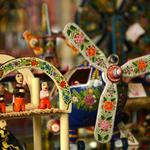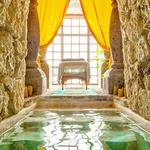Derek & Ileana
Things To Do
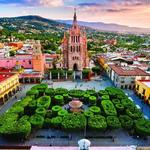
El Jardin (Zocalo) - San Miguel de Allende
El Jardin is San Miguel’s main plaza, located in the heart of the city. At the Zocalo, as El Jardin is often called, you can spend time people-watching, perusing the nearby shops and restaurants and reorienting yourself should the town’s winding roads lead you astray.
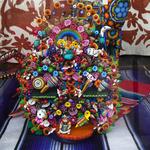
Mercado de Artesanías - San Miguel de Allende
In the San Miguel de Allende Mercado de Artesanías, you can observe some of the techniques and the materials that the artisans of the region utilize such as brass, wool, carved quarry and mesquite wood, paper mache, glass, jewelry and pottery. You can also find stones and antiques. There are an immense number of stands at every turn that offer beautiful crafts, surely to delight all visitors.
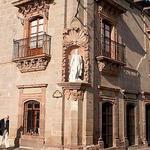
Historic Museum of San Miguel de Allende
Housed in a building of the seventeenth century, which was the home of Ignacio Allende. Currently, the museum showcases about 80 pieces, among which are several personal items from Allende, archaeological artifacts from Mesoamerican cultures and the region, as well as several historical documents of San Miguel.
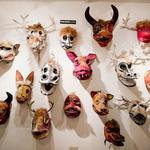
Mask Museum - San Miguel de Allende
Owner/curator Bill LeVasseur has spent more than 25 years acquiring an extraordinary collection of over 500 Mexican ceremonial masks. Through his visits to often remote indigenous communities and his observation and documentation of masked dancing, he has also acquired an extensive knowledge of masks and masked dancing that he is eager to share.
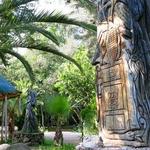
Juárez Park - San Miguel de Allende
Parque Juarez—also called the French Park—is the largest green space within San Miguel's city center. It's got fountains, winding paths, basketball courts, and public classes in tai chi, yoga, and zumba. It's quiet, peaceful, and safe. White egrets nest in the trees here despite municipal attempts to drive them out. Just above the park is Chorro, a steep winding street that runs past a row of public washing basins that are still being used.
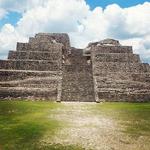
Cañada de la Virgen - San Miguel de Allende
After a 13-year-long investigation, the archaeological zone, La Cañada de la Virgen, finally opened to the public in 2011. These ancient ceremonial ruins were once home to rulers and priests between 300 and 1050 A.D. They also served as a burial ground, (some remains are a thousand years older than the structures themselves) a precisely aligned agricultural calendar, and an observatory center. Sunken patios and pyramids mimic the contours of the nearby hills and mountains, incorporating the surrounding landscape into the architectural design. (One hour away from city center, tours available from SMA)
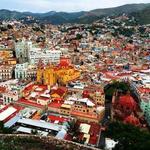
Monumento al Pipila - Guanajuato Capital City
Guanajuato rightfully stands the El Pipila Monument on the best vantage point of the city which provides tourists excellent panoramic views of the city. In front of the statue is a wide viewing platform which looks over the entire historic centre of Guanajuato. The statue of El Pipila and the adjoining viewpoint is best visited just before sunset; as on arrival the city and hills opposite are bathed in golden sunlight. As the sky darkens the lights of the city come on enhancing Guanajuato magical appeal, the Basilica which is prominently located in the centre of the city is illuminated spectacularly. With the recent construction of the funicular the pain and effort to reach the viewpoint has all but been eliminated.
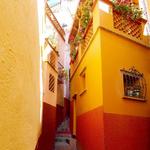
Callejón del Beso - Guanajuato Capital City
While Guanajuato has many narrow alleyways, this particular alley has a story behind it that is just as colorful as this city itself. The local legend tells of a young girl from a well-to-do family who fell in love with a poor miner boy that the family did not approve of. The boy rented the room exactly across this narrow alley from the girl’s room. At night they would sneak out to their balconies to kiss across this little alleyway. The boy would sometimes climb into the girl’s room and one night her father caught them in the act. In a fit of rage, the father stabbed and killed his daughter. Meanwhile, the boy tried to escape out the window but plunged to his death in the alleyway below. Like most urban legends, there are a few variations of this tragic tale but they all follow this same theme. Today a superstition lives on in which couples who smooch in Alley of the Kiss are rewarded with seven years of good luck!
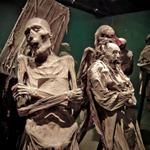
Museum of Mummies - Guanajuato Capital City
Of all the things to do in Guanajuato, visiting a museum filled with mummies is definitely the most offbeat. One story says that these people had to be dug up from the cemetery in order to make room for new bodies. Another states that a perpetual burial tax was issued and those who couldn’t afford it, had their beloved family members dug up and moved. Regardless of which story is true, what was discovered wasn’t skeletons as planned. Due to the large amounts of clay and limestone in the ground, the bodies became mummified!
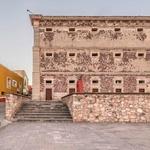
Alhóndiga de Granaditas - Guanajuato Capital City
The “Alhóndiga de Granaditas”, Guanajuato was the focal point for the first confrontation in the Mexican independence movement and this makes the crumbling structure one of the most important buildings in Guanajuato. Inside the huge complex is the interesting “Museo Regional” (Regional Museum), which details the history of the region.
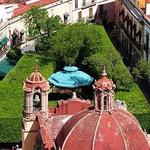
Jardín de la Unión - Guanajuato Capital City
The Jardin Union in Guanajuato is the heart and soul of the city and home to the city's best bars and restaurants. At night there is an energetic and fun atmosphere as Mariachi bands and performing students entertain the restaurant patrons. The Jardin Union is the place to start your evening but the great food, free-flowing drink and never-ending entertainment may mean that your night ends there too!
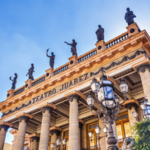
Teatro Juarez - Guanajuato Capital City
The theatre was inaugurated on 27 October 1903 by President Porfirio Diaz but the heyday of the Teatro Juarez was a few years later between 1907 and 1910 when patrons would travel from all over the state to view the latest performances. During this period the Teatro Juarez was regarded as the most magnificent and prestigious theatre in the whole of Mexico. This all dramatically change during the Mexican Revolution when few performances were held with most people concerned by political tensions. After the revolution the fortunes of the Teatro Juarez improved but not to the era before the revolution as cinema encroached on audiences. Since 1972 the Juarez Theater has been the focal point for the International Cervantes Festival.
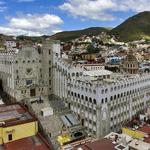
University of Guanajuato - Guanajuato Capital City
Guanajuato, since the early years of the Spanish colonization of Mexico, has always been a centre of education and study. Guanajuato is a young lively city that has a vibrant social atmosphere and these characteristics originated from the large student population which attends the renowned university. The main campus building of Guanajuato University is a block to the north from the Basilica of Guanajuato and here students can be found all day loitering on the many steps to the main entrance wait for lessons.
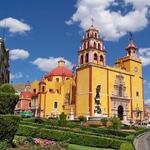
Parroquia de Basílica de Nuestra Señora - Guanajuato Capital City
Of the 23 churches or religious buildings in the relatively small area of central Guanajuato the Nuestra Señora de Guanajuato or more simple the Guanajuato Basilica is both the most visually striking and historically important. The exterior of the Guanajuato Basilica is painted a powerful shade of yellow with wine red detail and domed roof. There are numerous other religious buildings in Guanajuato painted similar with this distinctive colour scheme but none are as impressive as the basilica. The main portal is surrounded by a decorative pink sandstone formation of stepped layers with carvings of the saints.
